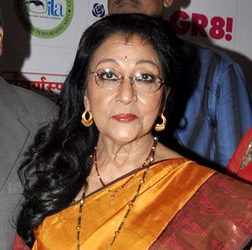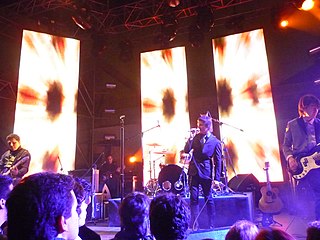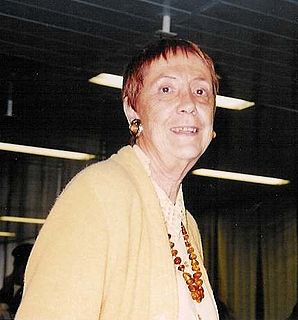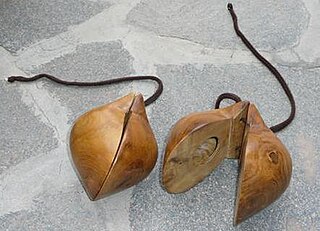External links
- Mala hembra at IMDb
| Mala hembra | |
|---|---|
| Directed by | Miguel M. Delgado |
| Written by | Janet Alcoriza, Luis Alcoriza |
| Starring | Rosita Quintana, Ernesto Alonso, Rubén Rojo |
| Cinematography | Víctor Herrera |
| Edited by | Jorge Bustos |
| Music by | Manuel Esperón |
Release date |
|
Running time | 85 minutes |
| Country | Mexico |
| Language | Spanish |
Mala hembra ("Poor Female") is a 1950 Mexican film. It was written by Luis Alcoriza.

Gloria de los Ángeles Treviño Ruiz, known as Gloria Trevi, is a Mexican singer, songwriter, dancer, actress, television hostess, music video director and businesswoman known as "The Supreme Diva of Mexican Pop".

A japamala, jaap maala, or simply mala is a loop of prayer beads commonly used in Indian religions such as Hinduism, Jainism, Sikhism, and Buddhism for counting recitations when performing japa or for counting some other sadhana such as prostrating before a holy icon. They are similar to other forms of prayer beads used in various world religions and are sometimes referred to in Christianity as a "rosary".

Malá Strana or more formally Menší Město pražské is a district of the city of Prague, Czech Republic, and one of its most historic neighbourhoods.

Saxegothaea is a genus comprising a single species, Saxegothaea conspicua. It is a conifer in the podocarp family Podocarpaceae, native to southern South America. It grows in Chile and Argentina from 35° to 46° South latitude; in its northernmost natural distribution it grows between 800 and 1000 (2600–3300 ft) m above sea level and in the south it lives at sea level. The species is most often known by its genus name, or sometimes as female maniu and Prince Albert's yew; in South America it is known as mañío hembra or maniú hembra.

Alda Sinha, better known by her stage name Mala Sinha is a former Indian actress who has worked in Hindi, Bengali and Nepali films. Initially starting her career with regional cinema, she went on to become a top leading actress in Hindi Cinema in the late 1950s, 1960s and early 1970s. In a career spanning four decades, Sinha rose to prominence with Guru Dutt's Pyaasa (1957) and Yash Chopra's Dhool Ka Phool (1959). Later, she starred in over hundred film productions including Phir Subah Hogi (1958), Hariyali Aur Rasta, Anpadh, Dil Tera Deewana (1962), Gumrah, Bahurani, Jahan Ara (1964), Himalay Ki God Mein (1965), Aasra (1966), Ankhen, Do Kaliyaan and Maryada (1971). She was known as the "daring diva" and "torch bearer of women's cinema" for essaying strong female centric and unconventional roles in a range of movies considered ahead of her times. Having received multiple awards and nominations, she was given the Filmfare Lifetime Achievement Award in 2018.
Tres may refer to:

Libido is a Peruvian rock band formed in 1996.

Angélica Gorodischer was an Argentine writer who was known for her short stories, which belong to a wide variety of genres, including science-fiction, fantasy, crime and stories with a feminist perspective.

Luis Alcoriza de la Vega was a respected Mexican screenwriter, film director, and actor.
Mala is a small town in Thrissur district of Kerala state, India. There is a Jewish synagogue in Mala town. At the moment, it is in ruins. The famous Pambu Mekkattu Mana (temple) is located here and attracts thousands of devotees every year.
Mala is a fictional supervillain in the DC Comics universe. The male version first appeared in Superman #65 in the story "The Three Supermen from Space!"
Soy Así is 23rd studio album recorded by Mexican performer José José, It was released by RCA Ariola in 1987. It was written and produced by Spanish producer Rafael Pérez-Botija. This album became the fourth number-one set on the Billboard Latin Pop Albums by the artist and at the Grammy Awards of 1989 was nominated for Best Latin Pop Performance and for Pop Album of the Year at the 1st Lo Nuestro Music Awards.

Hembra is the second studio album by Líbido, released in 2000.

A kuisi is a Native Colombian fipple flute made from a hollowed cactus stem, with a beeswax and charcoal powder mixture for the head, with a thin quill made from the feather of a large bird for the mouthpiece. Seagull, turkey and eagle feathers are among the feathers commonly used.

For the style of bags made by some indigenous people in Panama, see Ngobe-Bugle

Gloria is the eighth studio album by Mexican singer-songwriter Gloria Trevi. It was released on March 22, 2011 by Universal Music Latin, after a four-year gap since the release of her last studio album, Una Rosa Blu. Trevi worked as co-writer for the album tracks, while Armando Avila, Sebastián Jácome, Dr. Luke and Cirkut worked as the record producers. The themes of the songs are her personal feelings, female empowerment, survival and romantic love.

The Mala Synagogue is one of the oldest extant synagogues in India and was built by the historic Malabar Jews of Kerala. It is located at Mala, a small town in Thrissur district of Kerala state in south India.

Rubén Rojo Pinto (1922–1993) was a Spanish-Mexican actor.

Mala Vas, last officially named Mala Vas na Posavju during its existence as an independent settlement, is a locality in the northern part of the capital Ljubljana in central Slovenia. It is part of the traditional region of Upper Carniola and is now included with the rest of the municipality in the Central Slovenia Statistical Region.